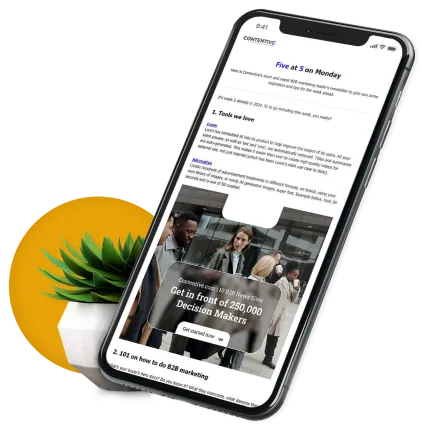It’s your lunch hour and while you dig into your chosen combination of this week’s leftovers, you decide that you’d like to entertain yourself on social media. Where do you go? Unless you prefer long-form videos AND have the time to watch them, odds are you are going to one of the big three to get your fix: TikTok, Instagram or Facebook. We’ve included TikTok in the mix due to its recent explosion in popularity, especially amongst younger viewers. But if we’re honest, Instagram and Facebook are the only 2 platforms that have consistently demanded the world’s attention – across all demographics. Both of these social media powerhouses, along with other popular applications such as WhatsApp, belong to one multinational technology conglomerate: Meta. If the aforementioned examples are anything to go by, I’m sure we can all agree that Meta has been extremely successful. How have they achieved this and what can we learn from them?
What is Meta and why have they been so successful?
The simple explanation would be to tell you that Meta is the umbrella company that owns big companies such as Facebook and Instagram. And while that is true and mightily impressive, it only tells a fraction of Meta’s story. So, instead of boring you with facts that you could find on their Wikipedia page, we want to delve into their story, uncovering not only what meta is but also how they got there – hopefully extracting a few lessons along the way.
Where it all began…
Facebook was founded in 2006 by Mark Zuckerberg and a few of his friends while studying at Harvard University. Although 2006 was the year that Facebook as we know it became accessible to the general public, there were several iterations of the idea before this. As early as 2003, Zuckerberg began exploring the concept of digital face books. A “face book” was a student directory that stored photos and other student information and, at that time, was only found as a hard copy. Zuckerberg thought that there had to be a better way to make this information readily available and shareable, and in doing so, stimulate connection between students on the campus. Zuckerberg is often quoted as crediting his desire to facilitate human connection as the backbone of his Facebook journey.
Lesson 1: Connection is key
The Facebook story is built on the foundation of one simple truth: humans want, and arguably need, connection. Whether from our spouses, best friends or goldfish, the innate desire for relationships with other humans is an ideal that we simply cannot escape. Although we may not be the founders of a company that centres its value around this concept, understanding this is paramount to the growth of any business.
Without connection, there is no relationship. And without relationships, there is no business. “I work alone”, you say. Well, what about the clients you work for, or with? Whether you call them colleagues, bosses, suppliers or customers, you cannot run a business without, at some level, needing to establish and manage relationships.
Whether you work in marketing, where connections are found in creating content that encourages interaction with your audience, or data, where objective numbers often need subjective relationships, there is immense value in placing value in connection.
“Your ability to form meaningful relationships with customers, partners and stakeholders will directly influence your ability to grow your business.”
How you can implement this lesson:
Next time you’re creating content or analysing data, why not as ask this question: How can this facilitate connections and build relationships?
Even though the platform seemed to garner serious attention from the get-go, Meta as we know it today is radically different to those first iterations. Along the way, Meta has combined sustained and disruptive innovation to improve their offering while challenging the status quo, and in doing so, has stayed in the spotlight. So what marketing strategies and features have they picked up along the way that have kept them there?
Lesson 2: Audience personalisation:
Very early on, Meta realised the power of personalisation. The original Facebook of 2004 and 2005 didn’t have a means for users to be automatically updated about their friends’ activity. Instead, if you wanted to find out what someone was up to, you would have to search for and scroll through their page (subtle, much). Essentially, the Facebook I used was identical to the Facebook everyone else used. How did they combat this? The addition of the news feed- a feature where users’ most important activity is broadcasted to everyone in their network. In this way, users received content from the people they wanted to receive content from. This ultimately led to the formation of an algorithm that understands what users want and pumps out content according to their preferences.
“Meta understands that they can acquire customers with curated, targeted content.”
Today, Meta encourages users and businesses to create and share engaging content on its platforms. Features like Facebook Live, Stories, and Reels on Instagram provide avenues for users to express themselves creatively, driving user engagement and retention.
How has Contentive implemented audience personalisation?
In the same way, we have created various publications such as HRD, AccountancyAge and The CFO to direct personalised, curated content to specific target audiences. This, we believe, will generate the most qualified leads and support lead conversion.
Lesson 3: Partnerships and integrations:
Meta has formed partnerships with various companies and developers to integrate Facebook features into third-party apps and services. This integration increases Facebook’s visibility and user engagement across different platforms and highlights the power of using partnerships to grow your brand. Though one can argue that Meta never really needed the help in the first place, their respect for the relational potential in partnerships and integration has led to sustained growth and success.
“Seeing stakeholders as partners rather than customers positions shift your perspective from selfish gain to mutual benefit.”
What have we learnt from partnership & integrations?
As Contentive, our purpose is not to work for you, although work we will, but to partner with your businesses to attract and convert leads within your Ideal Customer Profile and we aim to deliver them within your current systems – streamlining the process between receiving leads to reaching out to them. (Read Effectively Reach Financial Decision-Makers in 7 Clear Steps)
Lesson 4: Data-driven decisions?
Perhaps the biggest cog in Meta’s marketing system is the heavy influence of data in their decision-making. Meta is well known for being at the forefront of data collection, and using this data have curated algorithms that provide content suited to each audience. Meta’s strategic utilisation of data is seen throughout almost every facet of its operations, underscoring its overall success.
“By meticulously analysing user behaviour (with or without our permission apparently), Meta crafts personalised experiences across platforms like Facebook and Instagram, ensuring that content resonates with individual preferences and interests.”
Meta’s commitment to data-driven decisions has also proven instrumental in fostering user acquisition and driving exponential growth across its platforms. According to recent statistics, Meta’s personalised content recommendations, fuelled by data analytics, have contributed to a significant increase in user engagement, with users spending an average of 34 minutes per day on Facebook and 30 minutes on Instagram. This tailored approach not only captivates existing users but also attracts new ones, propelling Meta’s user base to over 3 billion monthly active users on Facebook and 2.4 billion on Instagram as of 2024. Such staggering numbers highlight the transformative impact of data-driven strategies on Meta’s continued growth by expanding its global reach and solidifying its position as a leader in the digital landscape.
Data is king – So how has Contentive implemented data-driven decisions?
We have adeptly implemented data-driven decisions across our publications, (learn more about our publications: Accountancy Age, HRD Connect, The CFO, and The Global Treasurer) by segmenting data analysis, creating customised content, personalising user experiences, innovating products based on insights, establishing feedback loops for continuous improvement, and investing in advanced data technologies, thereby improving engagement and solidifying its leadership in delivering targeted solutions to senior audiences.
Fast forward 20 years from its initial founding, and Meta has become a major global power. Having acquired Instagram and WhatsApp along the way – for a whopping $22.6 billion combined – as well as partnering with multiple startups and advertising agencies, the organisation has epitomised continual growth and future-oriented business.
Lesson 5: Reach matters!
The acquisition of WhatsApp, Instagram, and other platforms has significantly expanded Meta’s reach and influence in the digital landscape. By integrating these platforms into its ecosystem, Meta gained access to their extensive user bases and diversified its offerings, catering to a broader audience across different demographics and geographies. This enhanced reach is crucial for business growth as it allows Meta to tap into new markets, attract more users and advertisers, and increase revenue streams. Moreover, the acquisition of these platforms has strengthened Meta’s competitive position in the social media and messaging space, enabling it to innovate and adapt to changing market trends more effectively.
Same same but different
Just like Contentive has smartly adopted Meta’s approach to broaden its reach and impact across the digital world, there are other big players out there who’ve taken a leaf out of Meta’s book. But, who are these contenders, and how have they put these lessons into action in their own unique playgrounds?
As we delve into Meta’s ascendancy in the realm of social media, it’s impossible to ignore the ripple effect its strategies have caused across the industry. Giants like X (formerly known as Twitter) and Snapchat, each carving their own niches within the vast digital expanse, have not just observed but actively adapted Meta’s strategies to fuel their growth and grow user engagement.
But, what does this adaptation look like beyond the surface? How have these platforms reinterpreted Meta’s success formula to fit their distinct visions and user bases? Let’s take a closer look at their tactics and transformations.
X (Formerly Twitter)
Transitioning from the broad, community-focused approach of Meta, X has honed its platform to serve real-time news and conversations. Audience personalisation on X is more about delivering the latest and most relevant discussions to users, using algorithmic timelines that echo Meta’s news feed personalisation but in the context of immediacy and trending topics. Data-driven decisions at X are pivotal, with targeted advertising solutions shaped by tweet engagement and user behaviour analytics. While partnerships and integrations have seen X leveraging live events and news, offering a distinct real-time engagement that contrasts with Meta’s diversified social networking.
Snapchat
Snapchat offers a different perspective, focusing on ephemeral content and augmented reality to engage its audience. The platform’s Audience personalisation is deeply embedded in its DNA, with Snap stories and Discover content tailored to individual preferences. Like Meta, data-driven decisions guide Snapchat’s advertising models and content offerings, though with a keen eye on maintaining user privacy. Snapchat’s partnerships and integrations, especially in AR technology, underscore its commitment to immersive and interactive user experiences, setting it apart from Meta’s broader approach.
Reflecting on the Competitive Landscape
As we compare Meta with its competitors, it becomes evident that while the core lessons from Meta’s success—personalisation, data analytics, and strategic partnerships—have been universally acknowledged, the application of these strategies varies significantly. X (formerly Twitter) and Snapchat have each carved their own path in the digital ecosystem, tailoring these strategies to fit their unique platform dynamics and audience needs.
As we continue to witness the evolution of these digital giants, it’s clear that the journey towards social media dominance is as much about innovation and adaptation as it is about understanding and leveraging the fundamental need for connection.




